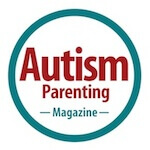Have you really considered the possible causes behind maladaptive behaviors among autistic children?
Many children on the autism spectrum have difficulty regulating their emotions. Outbursts, acting in defiance, or fleeing a situation are examples of behaviors of children experiencing stressful situations that result in feelings of anger, frustration, or anxiety. Behavioral science suggests that all behaviors serve the function of either gaining something sought (attention, an object, an event, a sensory experience, etc.) or avoiding something unwanted (a task, something sensory-provoking, a person’s attention, etc.).
Learning to understand the behavior of a person on the spectrum will aid in identifying both skills to teach and strategies to put into place that best match the function of the child’s actions. While examining emotional responses, it’s important to understand a child’s language skillset and his sensory profile.
What do we mean by this? It’s not unusual for a person with non-typical development in language skills to develop a uniquely individual approach for expressing wants and needs. Similarly, a person with intense sensory needs may develop a repertoire of behaviors for either seeking or avoiding specific experiences or sensations.
Tips to understand the behavior
Careful and consistent observations across living and learning environments should reflect these questions:
- What behavior am I looking at? Carefully describe the exact behavior
- What times of day is this behavior occurring?
- What spaces and places does this behavior occur within?
- Are there any people (adults or peers) associated with this behavior?
- What appears to initiate the behavior?
- What does the student gain or avoid from the behavior?
- What are the immediate outcomes, or consequences, of the behavior?
- What skill (or skills) does the student have in his/her strength skillset that could be targeted for teaching a more appropriate emotional response?
- What skill or skills does the student not yet have that could be taught towards the development of a more appropriate emotional response?
- What role do the student’s communication and sensory needs play in his/her emotional response pattern?
Behavior due to sensory stimuli
Once a behavior is better understood and a child’s communication and sensory needs have been examined, a decision on the direction of intervention scope and purpose needs to be addressed. First of all, it must be determined if a behavior is motivated by a sensory need. If this is the case, a review of the student’s methods of communication should signal an instructional focus: what weak skill should be strengthened, or what missing skill should be taught that would enable a child to gain what is needed?
Strategies to explore should center on teaching the child how to best indicate needs and wants through a total communication approach that works best for the individual child. This may include a system to prompt communication such as using key words, picture or symbol cards, modeling, or giving choices either verbally or through a choice board array.
Other possible causes for the behavior
The frustration of being misunderstood by those around them, paired with an inability to successfully communicate wants and needs, can lead to challenging behaviors in children on the autism spectrum. Embracing this core truth can allow the adults in the child’s life to center teaching skills that help to prevent behaviors linked to anxiety, frustration, and anger. The keys to success are to know the child well and to respond to individual needs through mindful observation and the consistent use of strategies that match the child’s demonstrated skill set, teaching what is necessary across environments.
Bronsard G, Botbol M, Tordjman S. (2010). Aggression in low functioning children and adolescents with autistic disorder
Dominick, K., Davis, N., Lainhart J, Tager-Flusberg H, Folstein S. (2007). Atypical behaviors in children with autism and children with a history of language impairment. Research in Developmental Disabilities, .28(2):145–162
Noens I, Van Berckelaer-Onnes I. (2004). Making sense in a fragmentary world: communication in people with autism and learning disability. Autism, 8: 197-218
Powers M. Palmieri M., D’Eramo K., Powers K. (2011). Evidence-based Practices and Treatments for Children with Autism. New York, NY: Springer. Evidence-based treatment of behavioral excesses and deficits for individuals with autism spectrum disorders; pp. 55–92
Sowden H, Perkins M, Clegg J. (2008). The co-development of speech and gesture in children with autism. Clinical Linguistics & Phonetics. 22:804-813
Ala’i-Rosales, S., Cihon, J. H., Currier, T., Ferguson, J. L., Leaf, J. B., Leaf, R., McEachin, J., & Weinkauf, S. M. (2018). The Big Four: Functional Assessment Research Informs Preventative Behavior Analysis. Behavior analysis in practice, 12(1), 222–234 https://doi.org/10.1007/s40617-018-00291-9
This article was featured in Issue126 – Romantic Relationships and Autism
